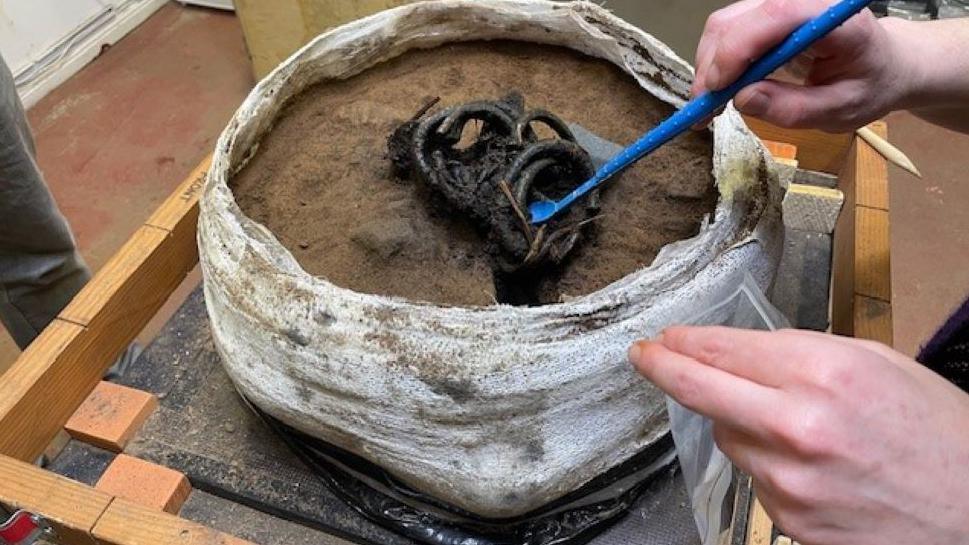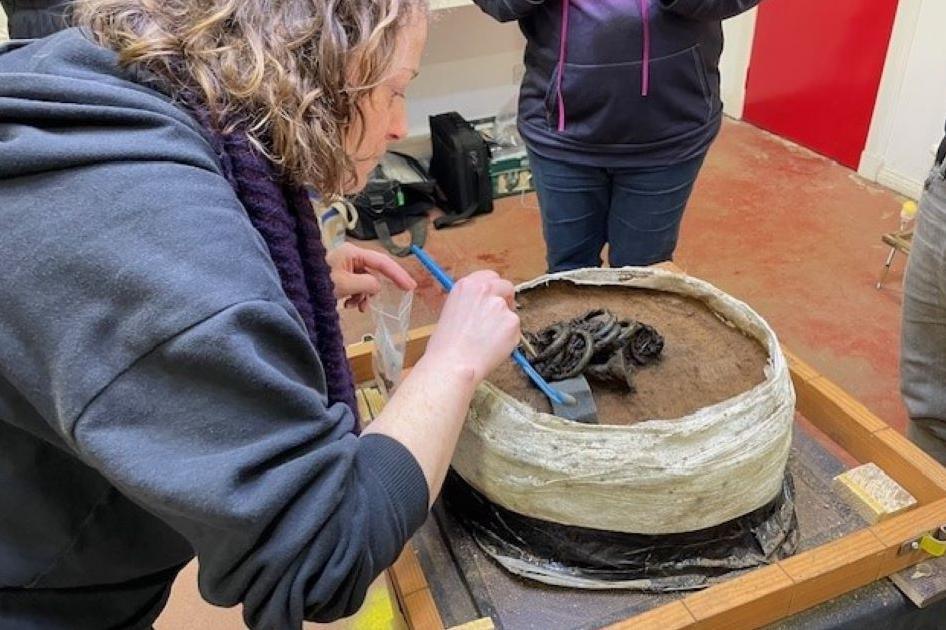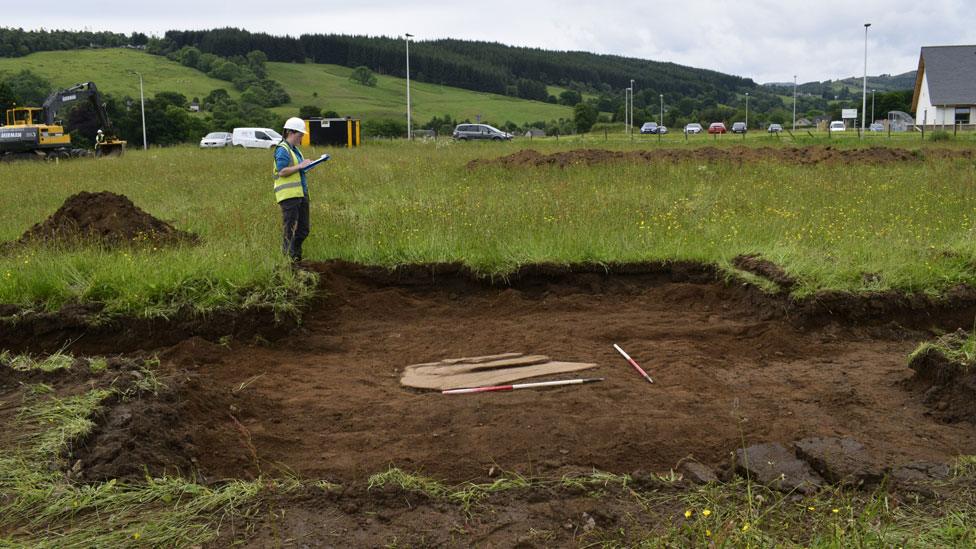Plant remains survived 3,000 years on Bronze Age bracelets

Bronze Age bracelets and neck rings found at Rosemarkie being examined in a laboratory
- Published
Rare remains of plants have been found on Bronze Age jewellery uncovered in the Highlands.
Archaeologists said the fibrous cords used to knot together bracelets had survived for about 3,000 years.
The ancient hoard, which appears to have been carefully buried, was found at a building site in Rosemarkie on the Black Isle where a Bronze Age village once stood.
It contained nine bronze bracelets and necklaces buried sometime around 1000 BC.
Guard Archaeology, working with Scottish Conservation Studio, carried out laboratory investigations of the discoveries.
Rachel Buckley, who led the work, said: "While there are other examples of hoards where it has been postulated that items were bound together due to their positioning, the vegetation in the Rosemarkie hoard has survived for approximately 3,000 years, proving that these artefacts were held together."
Archaeologists said the finds would help to improve knowledge of the lives, beliefs and deaths of Bronze Age people in the Highlands.
They also said it would add to what Guard Archaeologists have gleaned from another Bronze Age hoard they excavated in Carnoustie.

Archaeologist Rachel Buckley said the hoard was about 3,000 years old
Iraia Arabaolaza, who is managing Guard Archaeology’s analyses, said there was interest around how the hoard was buried.
She said: "It would seem that the shallow pit was dug to the required length and depth to accommodate the items, before then being quickly backfilled.
"It may be that it was intended as temporary storage with the intention of recovering the hoard at some stage.
"The evidence from the surrounding settlement may reveal whether it was not just the hoard that was abandoned but the settlement as well."
The archaeological work was funded by developer Pat Munro (Alness) Ltd.
Related topics
- Published14 December 2017

- Published3 December 2018
